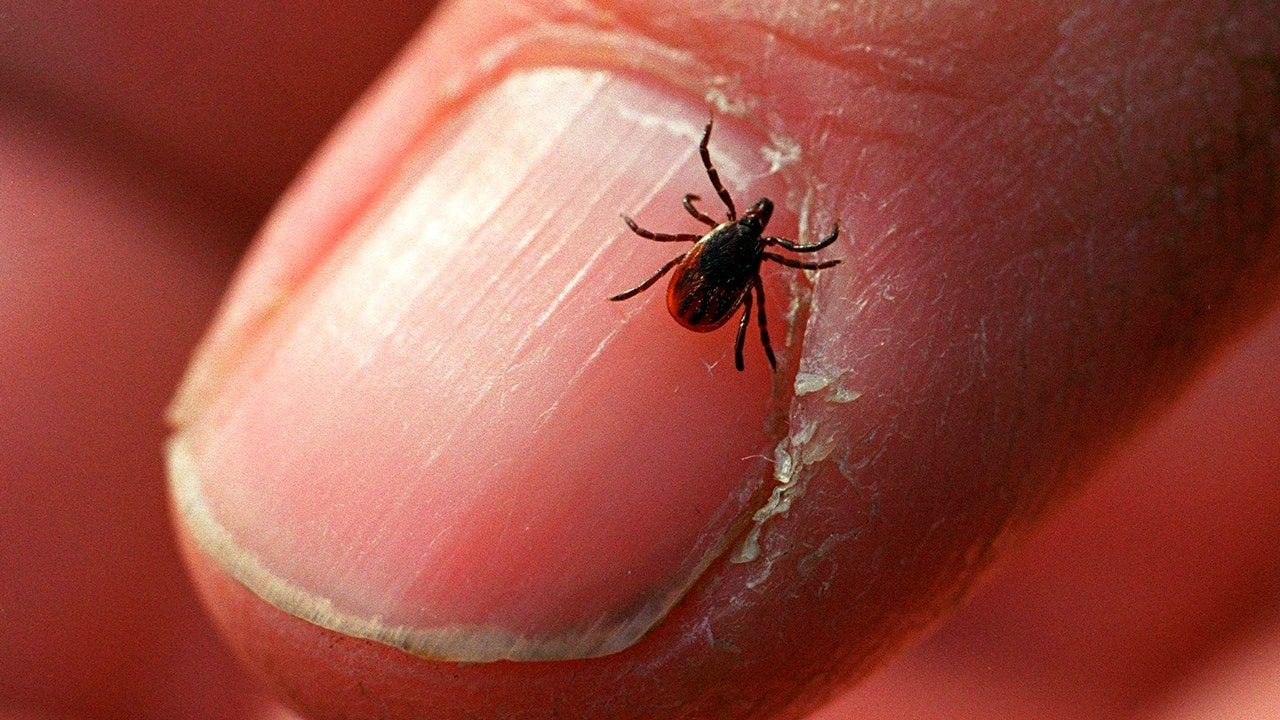Health
Ozempic, Wegovy and pregnancy risk: What you need to know about the issue

Ozempic and Wegovy share the common side effects of nausea and appetite loss, but there is one lesser-known risk factor that isn’t mentioned nearly as often.
The two semaglutide-containing medications — Ozempic for type 2 diabetes control and Wegovy for weight loss — could also pose a serious risk to unborn babies.
Animal studies have shown that when pregnant rabbits, rats and monkeys were given semaglutide, they experienced higher rates of miscarriage, birth defects and small fetal size — information that’s included in the drug labels for both medications, which are made by Novo Nordisk in New Jersey.
WEIGHT LOSS MEDICATIONS OZEMPIC AND WEGOVY: WHAT TO KNOW BEFORE YOU STOP TAKING THEM
Ozempic is still wildly popular, with more than four million active prescriptions, per the manufacturer’s website. While it’s marketed as a diabetes-controlling medication, it’s also well-known for its frequent off-label use as a weight loss aid.
There has also been increasing demand for its weight loss counterpart, Wegovy — so much that Novo Nordisk announced earlier this month it will be limiting the availability of some starter doses.
Animal studies have shown that when pregnant rabbits, rats and monkeys were given semaglutide, they experienced higher rates of miscarriage, birth defects and small fetal size. (iStock)
Semaglutides are in a group of medications called glucagon-like peptide-1 receptor agonists (GLP-1 RAs).
They work by imitating the behavior of the GLP-1 hormone, which is released in the gut after eating and triggers the body to produce insulin.
Doctors issue caution during pregnancy
Dr. Rekha Kumar, chief medical officer at the medically supported weight care program Found and a practicing endocrinologist in New York City, advises her patients to stop taking semaglutide-containing medications in the months leading up to pregnancy.
“Given the fact that these medicines have not been studied in pregnancy, I would recommend stopping the long-acting ones like Ozempic and Wegovy two to three months before,” she told Fox News Digital in an interview.
OZEMPIC, WEGOVY AND ALL THOSE CRAZY, VIVID DREAMS: IS THERE A CONNECTION?
Whenever she prescribes FDA-approved medicine for weight loss, Kumar said she always has a conversation with patients about whether they’re trying to get pregnant or if they’re on contraception.
“And if we’re prescribing any medicine that could be contraindicated, we let them know,” she said.
In cases where diabetes or weight management is critical to the health of patients, Kumar sometimes switches them to a shorter-acting daily medication, such as phentermine for weight loss or metformin for diabetes, which can be taken up until a month before pregnancy.

Ozempic is FDA-approved for the treatment of type 2 diabetes, to improve blood sugar and reduce the risk of major cardiovascular events. (JOEL SAGET/AFP via Getty Images)
There’s a marked difference between patients who are using Ozempic for diabetes versus those using Wegovy for weight loss, the doctor pointed out.
That’s because weight loss is not advised while someone is pregnant.
“If you look at the American College of Obstetrics and Gynecology’s weight gain guidelines, nobody is recommended to lose weight during pregnancy,” Kumar told Fox News Digital. “The amount of weight you’re recommended to gain is based on your pre-pregnancy BMI.”
MATERNAL DEATH RATE IS ON THE RISE IN THE US, THE CDC REPORTS
Even for women who are overweight or have obesity, the most strict recommendation would be to not gain any weight, the doctor said.
It’s a different story for patients who have diabetes.
“The assumption is that they’re on a medicine that’s critical for managing a disease,” Kumar explained. “In that case, I’ll switch them to insulin during pregnancy.”
“Nobody is recommended to lose weight during pregnancy.”
Dr. Sue Decotiis, a weight loss physician in New York City who specializes in Ozempic, Mounjaro and other weight loss medications, also said she recommends that her patients stop taking these drugs if they become pregnant.
“We really don’t know what the risks are because they haven’t done any real studies, and I don’t believe that we’re going to see hideous long-term side effects — but then again, who wants to take the chance?” she said in a conversation with Fox News Digital.
In another twist, semaglutide medications can actually help women get to a point where they are able to conceive when they originally didn’t think they’d be able to, said Decotiis.
“We know that insulin resistance is a leading cause of infertility,” she said.
“A lot of people have reported that they were insulin-resistant and overweight, and that their periods were very irregular.”

When conducting its trials of semaglutide medications, manufacturer Novo Nordisk excluded women who were pregnant or intended to become pregnant, the company said in a statement to Fox News Digital. (iStock)
“Thus, when we correct the insulin resistance with these medications, people start getting regular periods and start getting pregnant,” she went on. “So that’s one added benefit of the drug.”
Many of Kumar’s patients have a long-term plan to take the medicine, lose a desired amount of weight and then try to get pregnant.
GETTING PREGNANT SOON AFTER ABORTION OR MISCARRIAGE MIGHT HAVE LOWER RISKS THAN PREVIOUSLY SUSPECTED: STUDY
If a woman on a semaglutide medication finds out she’s pregnant, Kumar said she can stop taking it right away — but in a best-case scenario, she recommends tapering off.
“This would allow the woman to monitor the compensatory hunger that comes back after stopping and implement other interventions and lifestyle changes, such as increasing dietary protein,” she said.
FDA calls for investigation
Based on reports from women who have experienced miscarriage or other pregnancy issues while taking these medications, the FDA is now requiring Novo Nordisk to conduct an investigation.
The company will have to keep a registry of any reported issues after exposure during pregnancy, including “major and minor congenital malformations, spontaneous abortions, stillbirths, elective terminations, small for gestational age, preterm birth and any other adverse pregnancy outcomes,” according to the FDA’s letter.

Based on reports from women who have experienced miscarriage or other pregnancy issues while taking these medications, the FDA is now requiring Novo Nordisk to conduct an investigation. (iStock)
On Reddit, one user shared that about 10 months ago she became pregnant while on Ozempic.
“This was quite a shock to me because we tried for three years to conceive naturally and had to go the gauntlet of IVF to have a baby,” she wrote.
“I delivered my son last September, quit breastfeeding in December and started Ozempic, conceived on March 22 (without knowing) and miscarried on April 26. What a shock this was to my entire family.”
RSV VACCINE FOR PREGNANT WOMEN INCHES CLOSER TO APPROVAL WITH FDA COMMITTEE RECOMMENDATION
Five months ago, another user shared that she got pregnant while taking the medication. The baby stopped growing at 5 weeks — the woman miscarried at 8 weeks.
Not all experiences ended badly, however.
Other women shared that they experienced healthy pregnancies even after being on a semaglutide medication before finding out they had conceived.
Drugmaker echoes warning
When conducting its trials of semaglutide medications, Novo Nordisk excluded women who were pregnant or intended to become pregnant, the company said in a statement to Fox News Digital.
“There are therefore limited clinical trial data with semaglutide use in pregnant women,” the statement continued.
“However, information related to pregnancy appears in Section 8.1 and 8.3 of the prescribing information for both Ozempic and Wegovy.”
“I don’t believe that we’re going to see hideous long-term side effects — but who wants to take the chance?”
That information includes the following warning: “Based on animal reproduction studies, there may be potential risks to the fetus from exposure to semaglutide during pregnancy, [Ozempic and Wegovy] should be used during pregnancy only if the potential benefit justifies the potential risk to the fetus.”
Said the company, “Pregnant women exposed to [Ozempic and Wegovy] and health care providers are encouraged to contact Novo Nordisk at 1-800-727-6500.”
Novo Nordisk also pointed out that while Wegovy and Ozempic both contain semaglutide, they are different products with different indications, dosages, prescribing information, titration schedules and delivery devices.

For women who have diabetes and become pregnant, Dr. Kumar said she switches them to insulin instead of Ozempic. (iStock)
“The products are not interchangeable and should not be used outside of their approved indications,” the statement said.
Ozempic is FDA-approved for the treatment of type 2 diabetes, to improve blood sugar, along with diet and exercise, and reduce the risk of major cardiovascular events such as heart attack, stroke or death in adults with type 2 diabetes and known heart disease, according to the company.
‘PREGNANCY NOSE’ HAS EXPECTANT MOMS GOING VIRAL ON TIKTOK AS MEDICAL EXPERTS EXPLAIN THE BAFFLING CONDITION
Wegovy is FDA-approved for chronic weight management in adults with obesity (BMI > 30) or overweight (BMI > 27) who also have weight-related medical problems, used with a reduced-calorie meal plan and increased physical activity, Novo Nordisk said.
End goal: A healthier pregnancy
While semaglutides carry potential risks during pregnancy, Kumar emphasized that when prescribed properly to a woman who is struggling with her metabolic health, these medications could help enable a healthier pregnancy.
CLICK HERE TO SIGN UP FOR OUR HEALTH NEWSLETTER
“If somebody is using contraception and they’re under the care of an OB-GYN and an endocrinologist and they’re at risk of gestational diabetes, taking this medicine for a period of time might actually allow them to get pregnant more easily and lower their risk of gestational diabetes,” she explained.
“So when used appropriately in women that desire fertility, there is an appropriate way to do it.”

Health
fatty15 has the essential nutrient to ease stress and well-being

Sign Up
Create a free account to access exclusive content, play games, solve puzzles, test your pop-culture knowledge and receive special offers.
Already have an account? Login
Forgot your password?
Get back to the Sign In
Use left and right arrow keys to navigate between menu items.
Use escape to exit the menu.
Health
Summer is tick season, but these tips can help you avoid the bloodsucking bugs

Tick season is starting across the U.S., and experts are warning the bloodsuckers may be as plentiful as ever.
Another mild winter and other favorable factors likely means the 2024 tick population will be equal to last year or larger, some researchers say.
“It’s very bad and has only been getting worse,” said Susanna Visser of the Centers for Disease Control and Prevention.
TICK BITES AND LYME DISEASE: WHAT TO DO IF A TICK BITES YOU OR YOUR PET
An increasing variety of ticks are pushing into new geographical areas, bringing unusual diseases. Exotic southern species like the Gulf Coast tick and the lone star tick are being detected in New York and other northern states, for example.
But the tick that experts warn of the most is a common blacklegged tick, which is found mainly in forests and spreads Lyme disease. Infection rates begin to peak in May, and U.S. health officials estimate nearly half a million Lyme disease infections happen annually.
Here’s a look at what’s expected this year and how you can protect yourself.
An adult deer tick, also known as the blacklegged tick, crawls on a fingernail at Connetquot State Park in Oakdale, New York on Dec. 27, 2011. (Bill Davis/Newsday RM via Getty Images)
TICK FACTS
Ticks are small, eight-legged bloodsucking parasites — arachnids, not insects — that feed on animals and sometimes people. Some ticks are infected with germs that can cause illness, and they spread those germs when they bite.
There is no widely accepted estimate of how many ticks there are from one year to the next, but there is a scientific consensus that they are an increasingly common health hazard in large portions of the United States.
Blacklegged ticks — also known as deer ticks, since they feed on deer — are among the most common ticks in the eastern half of the U.S. They were plentiful centuries ago, then diminished when forests were cut down and deer were hunted, and rebounded alongside deer and wooded suburbs. The ticks have spread out from pockets in New England and the Midwest over a wider range.
Tick populations cycle throughout the year and their numbers depend on a few factors. They like warm, humid weather, and more can be seen after a mild winter. The more deer and mice available to feed matters, too.
Overall, the blacklegged tick population has been expanding for at least four decades, researchers say.
“This is an epidemic in slow motion,” said Rebecca Eisen, a CDC research biologist and tick expert.
2024 TICK SEASON FORECAST
Weather can play a role in the severity of a tick season.
Very cold, dry winters can whittle down tick populations, but recent winters have been mild — a trend some attribute to climate change.
As Scott Williams, a tick researcher at the Connecticut Agricultural Experiment Station, said: “Winters are no longer limiting the tick population.”
Ticks can withstand the heat but tend to almost hibernate when it’s a dry summer. That happened in Maine in 2020 through 2022, said Chuck Lubelczyk, a vector ecologist at the MaineHealth Institute for Research.
But last year was a very wet year, and tick activity multiplied in Maine — the state with the highest incidence of Lyme disease in the country. Weather service predictions call for higher temperatures and precipitation, so “on paper, at least, it could be a very good year for the ticks,” Lubelczyk said.
In Wisconsin, adult ticks were out longer than usual due to a mild winter. The tick nymphs are starting to emerge, and a wet spring is setting the stage for the possibility that the population will be robust, said Xia Lee, an entomologist at the Wisconsin Department of Health Services.
Ditto New York.
“It will be as bad as last year, or worse,” said Saravanan Thangamani, who studies ticks and tickborne diseases at SUNY Upstate Medical University in Syracuse.
WHAT IS LYME DISEASE?
Not all ticks are infected with disease-causing germs — about 20% to 30% of the blacklegged tick nymphs that emerge in the Northeast and Midwest this spring and into summer will be carrying the bacteria that causes Lyme disease, experts estimate.
Lyme disease symptoms tend to start between three and 30 days after a bite occurs and can include fever, headache, fatigue and a bull’s-eye-like rash. If you get bitten and develop symptoms, see a doctor to get treated with antibiotics.
HOW TO KEEP TICKS OFF OF YOU
Experts say the best thing to do is take steps to avoid a tick bite in the first place.
If you go outdoors, make note of wooded areas and where grassy properties start bleeding into wooded areas. Ticks tend to perch on ankle-level vegetation with their upper legs outstretched, waiting to latch on to an unsuspecting dog or human.
Try to walk in the middle of paths, wear light-colored and permethrin-treated clothing and use Environmental Protection Agency (EPA)-registered insect repellents.
HOW TO CHECK FOR TICKS
When you come inside, check for ticks. They can be found anywhere on the human body, but common spots include around the waist, behind the knees, between fingers and toes, on underarms, in the belly button and around the neck or hairline.
They are harder to see when they are young, so look carefully and immediately pull them off with tweezers.
The CDC does not recommend sending individual ticks to testing services for analysis, because a person might get more than one tick bite and the results from the tested tick may not be sufficient information.
Health
Pizza for Weight Loss? Top MD Says This Dough Makes It Possible

Sign Up
Create a free account to access exclusive content, play games, solve puzzles, test your pop-culture knowledge and receive special offers.
Already have an account? Login
Forgot your password?
Get back to the Sign In
Use left and right arrow keys to navigate between menu items.
Use escape to exit the menu.
-

 World1 week ago
World1 week agoPentagon chief confirms US pause on weapons shipment to Israel
-

 Politics1 week ago
Politics1 week agoRFK Jr said a worm ate part of his brain and died in his head
-

 Politics1 week ago
Politics1 week agoOhio AG defends letter warning 'woke' masked anti-Israel protesters they face prison time: 'We have a society'
-

 News1 week ago
News1 week agoNine Things We Learned From TikTok’s Lawsuit Against The US Government
-

 Politics1 week ago
Politics1 week agoBiden’s decision to pull Israel weapons shipment kept quiet until after Holocaust remembrance address: report
-

 Education1 week ago
Education1 week agoVideo: Police Use Pepper Spray on Protesters on G.W.U.’s Campus
-

 World1 week ago
World1 week agoA look at Chinese investment within Hungary
-

 News1 week ago
News1 week agoThe Major Supreme Court Cases of 2024



















